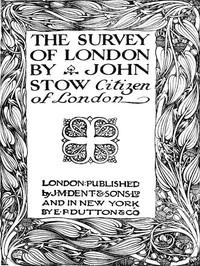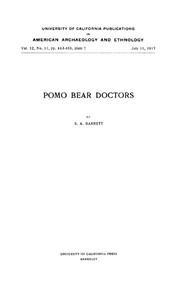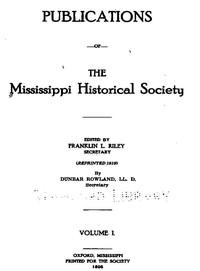|
|
Read this ebook for free! No credit card needed, absolutely nothing to pay.Words: 16981 in 24 pages
This is an ebook sharing website. You can read the uploaded ebooks for free here. No credit cards needed, nothing to pay. If you want to own a digital copy of the ebook, or want to read offline with your favorite ebook-reader, then you can choose to buy and download the ebook.

: A Selection of Books Published by Methuen & Co. September 1913 by Methuen Co - Publishers' catalogs England; Methuen & Co. Catalogs@FreeBooksWed 07 Jun, 2023 Transcriber's note: Text enclosed by underscores is in italics . A HISTORY OF MOURNING. RICHARD DAVEY. Jay's, Regent Street, W. The cat was worshipped as a divinity by the Egyptians. Magnificent tombs were erected in its honour, sacrifices and devotions were offered to it; and, as has already been said, it was customary for the people of the house to shave their heads and eyebrows whenever Pussy departed the family circle. Possibly it was their exalted position in Egypt which eventually led to cats being considered the "familiars" of witches in the Middle Ages, and even in our own time, for belief in witchcraft is not extinct. The kindly Egyptians made mummies of their cats and dogs, and it is presumable that, since Egypt is a corn growing, and hence a rat and mouse producing country, both dogs and cats, as killers of these vermin, were regarded with extreme veneration on account of their exterminating qualities. Their mummies are often both curious and comical, for the poor beast's quaint figure and face are frequently preserved with an indescribably grim realism, after the lapse of many ages. The funeral processions of the Egyptians were magnificent; for with the principal members of the family of the deceased, if he chanced to be of royal or patrician rank, walked in stately file numerous priests, priestesses, and officials wearing mourning robes, and, together with professional mourners, filling the air with horrible howls and cries. Their descendants still produce these strident and dismal lamentations on similar occasions. THE Egyptian Pyramids, which were included among the seven wonders of the world, are seventy in number, and are masses of stone or brick, with square bases and triangular sides. Although various opinions have prevailed as to their use, as that they were erected for astronomical purposes, for resisting the encroachment of the sand of the desert, for granaries, reservoirs, or sepulchres, the last-mentioned hypothesis has been proved to be correct, in recent times, by the excavations of Vyse, who expended nearly ?10,000 in investigating their object. They were the tombs of monarchs of Egypt who flourished from the Fourth to the Twelfth Dynasty, none having been constructed later than that time; the subsequent kings being buried at Abydos, Thebes, and other places, in tombs of a very different character. The first, or Great Pyramid, was the sepulchre of the Cheops of Herodotus, the Chembes, or Chemmis, of Diodorus, and the Suphis of Manetho and Eratosthenes. Its height was 480 feet 9 inches, and its base 764 feet square. In other words, it was higher than St. Paul's Cathedral, and built on an area the size of Lincoln's Inn Fields. It has been, however, much spoiled, and stripped of its exterior blocks for the building of Cairo. The original sepulchral chamber, called the Subterranean Apartment, 46 feet by 27 feet, and 11 feet 6 inches high, has been hewn in the solid rock, and was reached by the original passage of 320 feet long, which descended to it by an entrance at the foot of the pyramid. A second chamber, with a triangular roof, 17 feet by 18 feet 9 inches, and 20 feet 3 inches high, was entered by a passage rising to an inclination of 26? 18', terminating in a horizontal passage. It is called the Queen's Chamber, and occupies a position nearly in the centre of the pyramid. The monument--probably owing to the long life attained by the monarch--still progressing, a third chamber, called the King's, was finally constructed, by prolonging the ascending passage of the Queen's Chamber for 150 feet farther into the very centre of the pyramid, and, after a short horizontal passage, making a room 17 feet 1 inch by 34 feet 3 inches, and 19 feet 1 inch high. The changes which took place in this pyramid gave rise to various traditions, even in the days of Herodotus, Cheops being reported to lie buried in a chamber surrounded by the waters of the Nile. It took a long time for its construction--100,000 men being employed on it probably for above half a century, the duration of the reign of Cheops. The operations in this pyramid by General Vyse gave rise to the discovery of marks scrawled in red ochre in a kind of cursive hieroglyph, on the blocks brought from the quarries of Tourah. These contained the name and titles of Khufu ; numerals and directions for the position of materials, etc. The third Pyramid, built by Menkara, who reigned 63 years, is much smaller than the other two, and has also two sepulchral chambers, both in the solid rock. The lower chamber, which held a sarcophagus of rectangular shape of whinstone, had a pointed roof, cut like an arch inside; but the cedar coffin, in shape of a mummy, had been removed to the upper or large apartment, and its contents there rifled. Amongst the debris of the coffin and in the chambers were found the legs and part of the trunk of a body with linen wrapper, supposed by some to belong to the monarch, but by others to an Arab, on account of the anchylosed right knee. This body and fragments of the coffin were brought to the British Museum; but the stone sarcophagus was unfortunately lost off Carthagena, by the sinking of the vessel in which it was being transported to England. There are six other Pyramids of inferior size and interest at Gizeh; one at Abou Rouash, which is ruined, but of large dimensions; another at Zowyet El Arrian, still more ruined; another at Reegah, a spot in the vicinity of Abooseer, also much dilapidated, and built for the monarch User-en-Ra, by some supposed to be Busiris. There are five of these monuments at Abooseer, one with a name supposed to be that of a monarch of the Third Dynasty; and another with that of the king Sahura. A group of eleven Pyramids remains at Sakkara, and five other Pyramids are at Dashour, the northernmost of which, built of brick, is supposed to be that of the king Asychis of Herodotus, and has a name of a king apparently about the Twelfth Dynasty. Others are at Meydoon and Illahoon, Biahmo and Medinat El Fyoum, apparently the sepulchres of the last kings of the Twelfth Dynasty. In Nubia, the ancient AEthiopia, are several Pyramids, the tombs of the monarchs of Mero? and of some of the Ethiopian conquerors of Egypt. They are taller in proportion to their base than the Egyptian Pyramids, and generally have a sepulchral hall, or propylon, with sculptures, which faces the east. The principal groups of these Pyramids are at Bege Rauie, or Begromi, 17? N. lat., in one of which, gold rings and other objects of late art, resembling that of the Ptolemaic period, were found. Free books android app tbrJar TBR JAR Read Free books online gutenberg More posts by @FreeBooks
: The Survey of London by Stow John Wheatley Henry B Henry Benjamin Author Of Introduction Etc - London (England) Description and travel; London (England) History 16th century Sources; London (England) Surveys@FreeBooksWed 07 Jun, 2023

: Ulster by Gwynn Stephen Lucius Williams Alexander Illustrator - Ulster (Northern Ireland and Ireland) Description and travel@FreeBooksWed 07 Jun, 2023
|
Terms of Use Stock Market News! © gutenberg.org.in2025 All Rights reserved.






